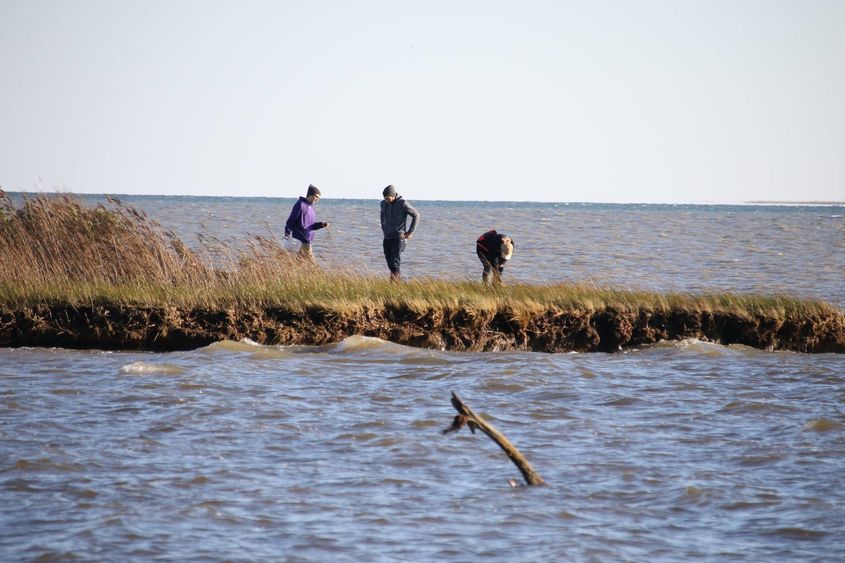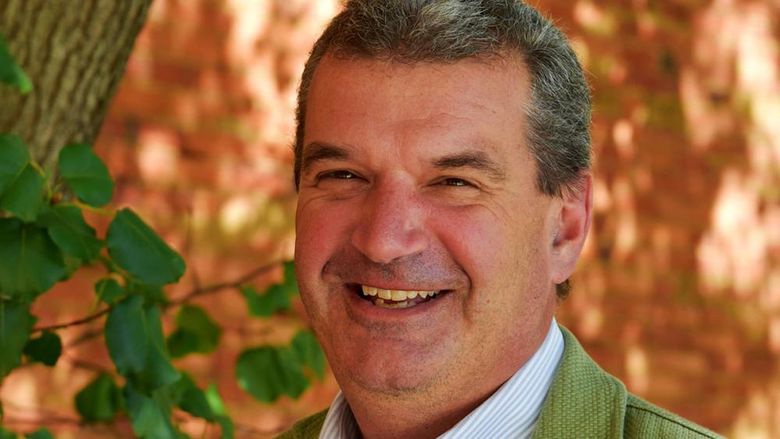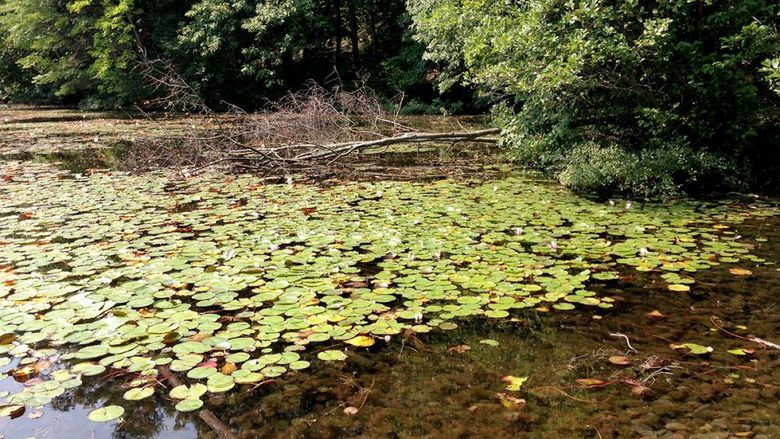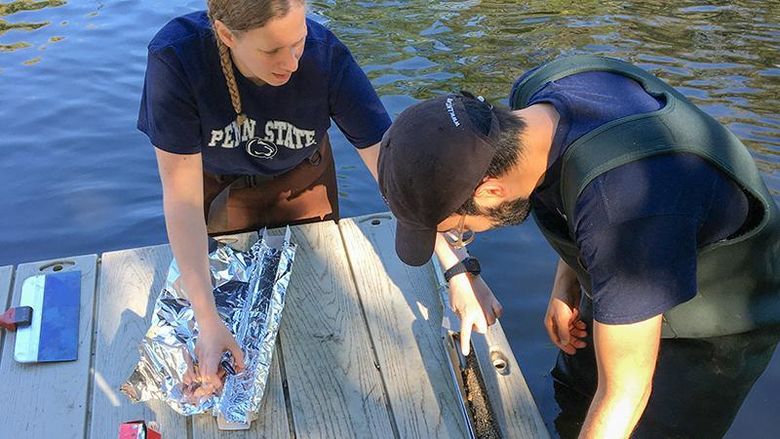
Penn State Altoona students spent three days on the waters of the Chesapeake Bay learning how to preserve the national landmark.
ALTOONA, Pa. — The Chesapeake Bay is the largest estuary in North America and one of the most important contributors to the ecology and economy of Maryland and Virginia. The largest part of the bay watershed lies within Pennsylvania, so the quality of the Commonwealth’s streams and the condition of its landscape have a disproportionate effect on the health of the bay.
For the past 12 years, Carolyn Mahan has taken a group of Penn State Altoona students to the bay to immerse themselves in the ecology of the mid-Atlantic region and learn how they can be a part of the restoration and revitalization of the bay. This semester, ten students from two biology classes took part in the three-day trip. The group spent most of their time working with staff from the Karen Noonan Center, one of four island, residential education centers run by the Chesapeake Bay Foundation.
“In my major, biology, there’s so much that you can see but can't touch,” says Tracie Cobb-Irvin. “So to have a class where you can go out in the environment and feel the bark on trees, get your hands in the water, and find and identify different species, is beneficial and really brings everything together for me as a student.”
Students conducted vegetation sampling and data collection exercises and studied diversity in the marshes. They learned how erosion is shaping the bay by visiting Holland Island, a small, marshy island once inhabited by several hundred people. Erosion forced residents to abandon their homes in the 1920s. “There is virtually no evidence of humans inhabiting the island except the cemetery that was never moved and artifacts that can be found lying in the mud, occasionally uncovered by water,” says environmental studies major Michelle Smithbauer. “On the island, I found a variety of snails, crab shells, oyster shells, some live crabs and fish, and an eagle’s nest! I thought it was very interesting to see a completely different environment than the one here at Penn State Altoona. It was amazing to discover the island’s wildlife first-hand.”
Students learned how erosion is shaping the bay and how water quality of the hundreds of waterways that feed into the bay contribute to its overall health. “I can lecture on the bay for weeks at a time,” says Mahan, “and that doesn't do anything to get students to care the way seeing it, smelling it, hearing it, waking up in it gets them to care.” There are many reasons for students and the general community to care about the bay.
Known for its beauty, the bay has suffered from pollution, runoff, over-harvesting and invasion of foreign species over the last several decades. Much of the pollution and run-off comes from the hundreds of waterways that feed into the bay. Altoona sits at the headwaters of the Chesapeake Bay; Spring Run, which winds through Penn State Altoona, feeds into the Little Juniata, which feeds into the Juniata, which empties into the Susquehanna, which reaches the bay. “Most of the negative effects on the bay originate in Pennsylvania,” states Mahan. “I want students to make a connection between what they do in the headwaters and what happens in the bay.”
Toxic chemicals, polluted and agricultural runoff, and natural gas drilling happening right here in Central Pennsylvania all negatively impact the bay. When the group visited Smith Island, students learned how those things and poor pollution control policy affect both the environment and the people in the crabbing and oyster industries. “You want the species that are supposed to be in the bay to live and flourish because without them, the ecosystem gets disrupted,” says environmental studies major Chris Morgan. “But by talking to the people who depend on the bay for their income, I realized how important it is for the bay to be healthy, beyond what lives in it. It's make or break for people there, too. If they can't get that food to sell, then they're not going to be able to make a living.”
Mahan says she wants students to continue caring about the bay once they return and to show that care in their everyday actions such as recycling and water and energy use. “The bay is reflective of overall environmental health. If the bay is sick, it's telling us about the overall health of the environment in the watershed, and we're in that watershed. I think by cleaning up the Bay and focusing on it, it forces us to clean up our own environment.”
“If we conserve our resources, prevent erosion, reduce pesticide and fertilizer use, and become conscious of our water quality in Altoona, we enhance the water quality of the bay as a result,” says Smithbauer. “We are part of the Chesapeake Bay, and we need to do our part to protect it.”
Each student who went on the trip must complete a senior capstone project. Mahan says 80 percent of them are working on projects that could directly affect or improve the health of the bay. Smithbauer, for example, is concerned about keeping deicers out of Spring Run. She would like campus officials to move the building where salt is stored on campus. In order for that to be justified, she must demonstrate that salt is getting into the stream. She is doing a study that looks at the run-off, and then she will prepare a report with recommendations for the campus. Another student is looking to improve the buffers along Spring Run. Not mowing right up to the edge of the stream would help a riparian buffer grow, shading the stream, keeping water temperatures down, and allowing the stream to hold greater oxygen levels. In addition, another student is working at the historic Fort Roberdeau site outside of Altoona to develop a program that will remove non-native plant species to the headwater stream there.
Of course, it wasn’t all work and no play on the trip. The group did have some downtime to enjoy the bay and bay food. One day they caught and ate their own crabs and feasted on seven-layer cake, the official dessert of Maryland. They played games and had a contest to see who could name the most species. “It was a great trip for everybody — students, professors, even the bus driver, Paul,” says Cobb-Irvin. “Everything was so new and exciting, like Christmas morning. We cooked together, we cleaned together, we just meshed and it was so much fun.” “It was nice to have that time to spend together with my classmates and really get to know them,” adds Morgan. “Aside from the academic aspect, it was a bonding experience.”
Mahan keeps in touch with dozens of alumni who went on the trip during their time at Penn State Altoona and says almost half of them work in a water quality-related field. “I don't know if the trip completely influenced that, but it might have had a part in it,” she says. “I've had students who are working with environmental education and have taken some of the ideas from this trip and used them in their own program.” Along with the personal connections she makes within the bay community, Mahan says introducing new people to the bay makes her not only enjoy the trip, but want to continue offering it as class curriculum, as well.
Students like Morgan, Cobb-Irvin and Smithbauer say they are still using conservation techniques they practiced during their time at Chesapeake Bay. “I haven't been able to stop thinking about it since we got back,” says Morgan. “It was the highlight of my semester, and as soon as I got back, I couldn't wait to tell my girlfriend about it and pass along ways to conserve. I got this 'Save the Bay' bracelet that I wear every day now. Every time I look at it this reminds me that I can make a difference.”





